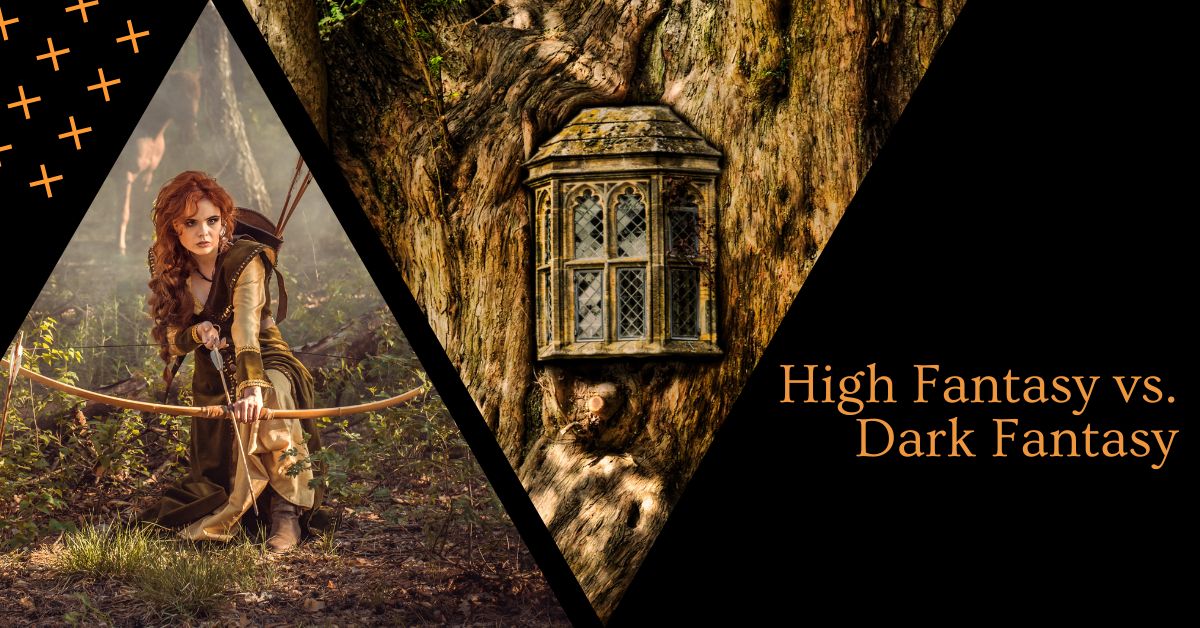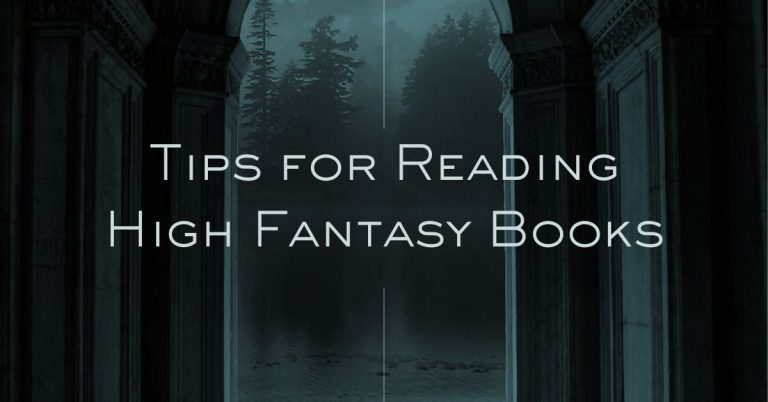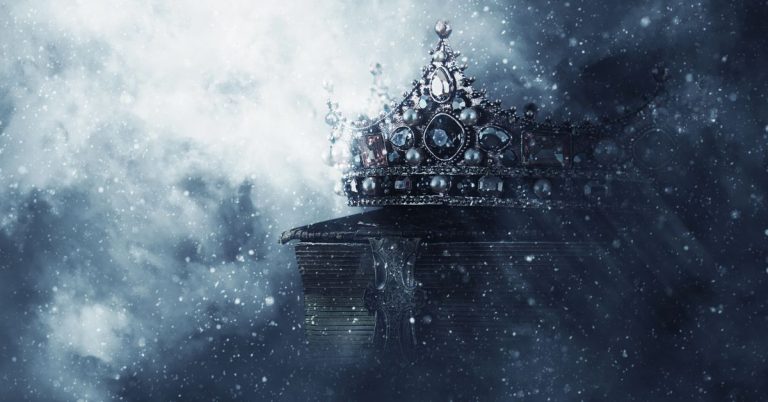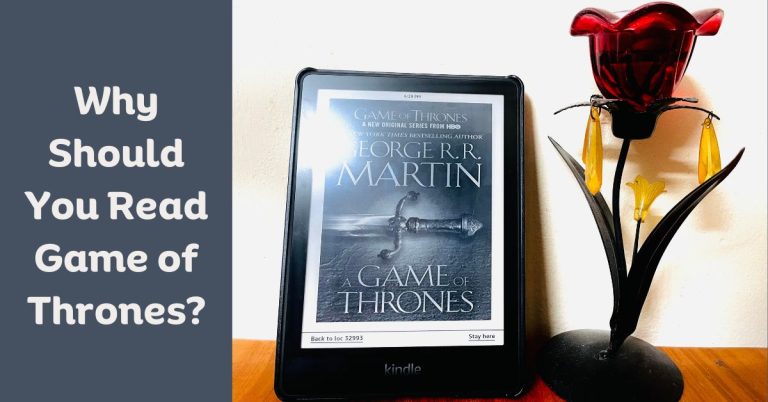High Fantasy vs. Dark Fantasy: Everything You Should Know
As a young girl, I was thrilled and swayed by the power of words – not just for everyday communication but also for their ability to create entire worlds from nothing. Books, especially fantasy novels and stories, became my life. I remember holding a copy of J.R.R. Tolkien’s The Hobbit for the first time with great clarity.
The book, worn and dog-eared from being passed down through my family, had its own strange power. I was unknowingly embarking on my own adventure into the wide universe of fantasy literature.
And finally, a day came when I started to dive deep into the world of Dark Fantasy! High fantasy, as well as dark ones, served as my portal to other realms, taking me down rabbit holes and through wardrobes into wonderful lands and great quests.
Today, I’m going to talk about two separate subgenres of fantasy literature: High Fantasy and Dark Fantasy. If you’re as fascinated as I was (and still am) by dragons, wizards, legendary creatures, and the war between good and evil, this deep dive is for you.
First, let’s take a look at:
What defines high fantasy?
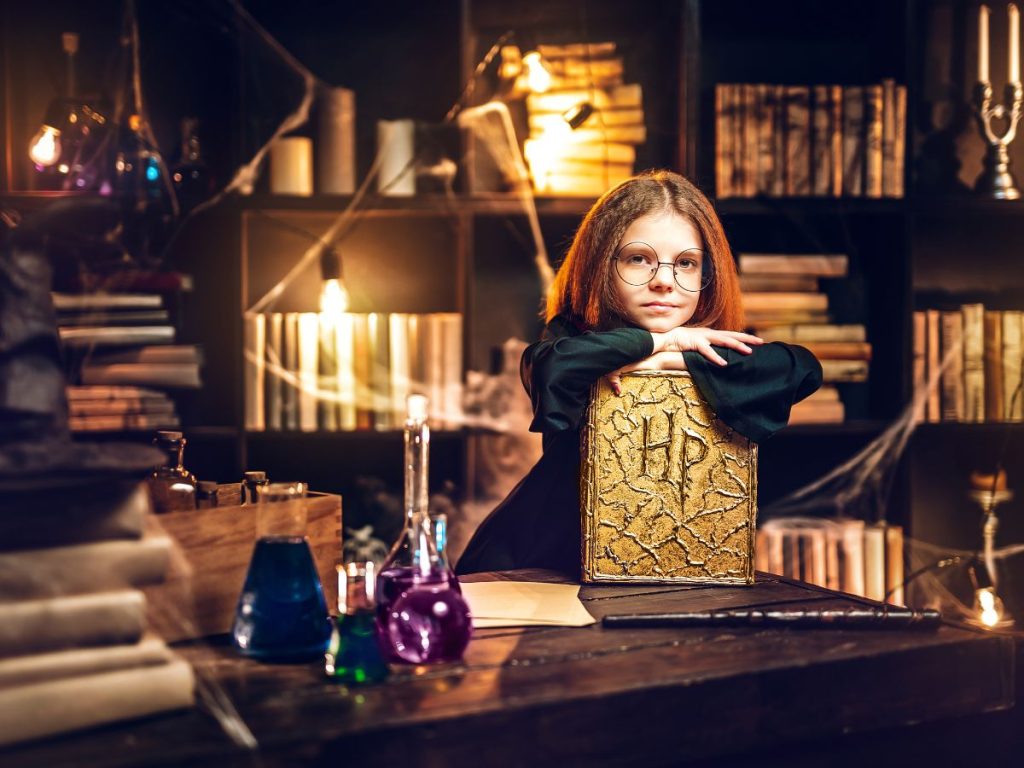
High Fantasy, sometimes known as epic fantasy, is a subgenre of fantasy distinguished by a wholly different and often intricate world with its own set of rules, cultures, and histories. This literary genre is typically characterized by epic confrontations between good and evil, with the destiny of kingdoms or even entire worlds hanging in the balance.
High Fantasy worlds are very different from our own. They are elaborate, often meticulously designed, and home to a plethora of fanciful aspects such as magic and mythical creatures such as dragons, elves, and dwarves, among many more.
The grand adventure or quest is a staple of High Fantasy. A quest to destroy a great object, like the One Ring in Tolkien’s The Lord of the Rings, or a war against a potent dark lord, like Harry Potter’s fight against Voldemort, are also examples. Characters from all walks of life band together in high fantasy tales to defeat evil and achieve a common purpose, promoting messages of camaraderie, friendship, and the ultimate triumph of good over evil.
Another feature of High Fantasy is the presence of obvious moral dichotomies. The line between good and evil is frequently drawn clearly, with protagonists symbolizing virtues like honor, courage, and love and antagonists personifying malevolence, corruption, and power for their own sake.
This isn’t to say the characters aren’t complex, just the contrary. High Fantasy heroes frequently go through major development and encounter moral and physical hardships that test and eventually define their character.
High Fantasy literature is also known for its rich tapestry of history and knowledge. The past of these worlds is not just a backdrop but an essential component of the story. The acts of the protagonists are typically based on historical occurrences, and old prophecies, curses, or stories regularly determine the plot’s trajectory.
While The Lord of the Rings and Harry Potter are undoubtedly representative of High Fantasy, the genre extends much beyond these two classics. The Game of Thrones books and TV shows are based on George R.R. Martin’s A Song of Ice and Fire, which is an example of High Fantasy with some elements of Dark Fantasy. A few more include Brandon Sanderson’s The Stormlight Archive, Philip Pullman’s His Dark Materials, and Patrick Rothfuss’s The Kingkiller Chronicle.
High Fantasy enchants readers with detailed world-building, big quests, strong moral dichotomies, and extensive histories. It allows you to escape reality while contemplating timeless human traits and values. In its breadth and depth, the genre invites us into realms where the extraordinary becomes regular, and the possibilities are only limited by our imagination.
High fantasy vs. dark fantasy: The differences and similarities:
There are significant distinctions and intriguing connections between the styles, topics, and tones of high fantasy and dark fantasy, despite the fact that both genres take readers into worlds of magic, magical creatures, and incredible narratives. They take different routes into the fantastic, providing readers and viewers with varying sensations.
High fantasy, often known as epic fantasy, typically features a fantastical realm with its own unique history, society, and set of laws. Whether it’s Tolkien’s Middle-earth or Martin’s Westeros, these worlds are fantastical in that they feature epic stories and unambiguous morality. High fantasy novels typically feature heroic protagonists on missions or in dramatic fights against terrible villains.
Fantasy novels take readers on adventures through fantastical worlds, where they meet and form relationships with a wide variety of non-human races, including elves, dwarves, and dragons, and investigate magical systems ranging from the subtle to the cosmic.
However, dark fantasy combines supernatural aspects with darker, often terrifying themes, blurring the lines between fantasy and horror. It doesn’t shy away from the morbid, unpleasant, or terrifying features of its universe as high fantasy does.
Dark fantasy features a morality that is less black-and-white and more complicated. It’s possible that even the heroes and the villains have their flaws. Andrzej Sapkowski‘s The Witcher series is a good example of this type of literature because of its ethically ambiguous protagonists and bleak environments.
There are certain essential parallels between high fantasy and dark fantasy, despite their distinctions. For example, in both types of stories, the underdog hero or group triumphs over the odds. An improbable hero may set out on a quest to vanquish a malevolent power in such a work of high fantasy.
This could refer to a corrupt system or a flawed protagonist battling their own demons in a dark fantasy novel. Both use the fantastic in unique ways to delve into human nature and societal problems.
Dark fantasy, on the other hand, explores themes of survival, corruption, and the capacity for both good and evil within individuals. High Fantasy often uses its epic good-versus-evil confrontations to showcase themes of heroism, sacrifice, and more. Both genres use the fantastic as a prism through which to examine the human experience, but they do it in very different ways.
High fantasy, despite its darker subject matter, frequently has a hopeful undercurrent. There’s a feeling that the heroes will win out in the end and that good will triumph over evil. However, the grimmer outlook of dark fantasy is celebrated.
However, these are not hard and fast categories. A lot of great stories have been written that combine elements from both high and dark fantasy. For instance, George R. R. Martin’s A Song of Ice and Fire series features both a dark and morally ambiguous storyline and an enormous high fantasy setting.
Finally, both high and dark fantasy provide fantastical getaways from reality, but in very different ways. Dark fantasy provides a grimmer, more intricate investigation of morality inside haunting, often chilling narratives, whereas high fantasy depicts a world of epic quests, obvious moral dichotomies, and grand-scale storytelling. Both genres, despite their distinctions, use the fantastic as a window into the richness and complexity of human nature and culture.
Can high fantasy be dark and vice versa?
Questions concerning where one genre ends and another begins are prevalent in the complex and enormous world of fantasy fiction. The subject of whether or not high fantasy can contain elements of darkness is a common one.
We can say, Yes, it can.
And dark fantasy can also be high fantasy. In most cases, dark fantasy contains all elements of high fantasy. To grasp the extent to which these two genres might merge, though, it’s important to investigate their subtleties.
As we’ve established, high fantasy is distinguished by its epic storytelling, sharp moral contrasts, and fantastical worlds. Dark fantasy is distinguished by its gloomy mood, anarchy to some extent, morally questionable characters, and the presence of other horrific elements. It’s not hard to imagine how these two types of stories could merge to produce a multifaceted tale that does justice to both.
Let your imagination wander to a fantastical realm, one with its own magic and cultures, and vastness. Combine this background with a plot that leans more heavily toward the macabre and horror, where the distinction between good and evil is fuzzier than usual. The end product would be an epic tale with a brooding, menacing mood that combines elements of both high and dark fantasy.
This blending of genres opens up opportunities for a creative story saying that subverts the norms of each. In such a world, high fantasy’s epic journeys might be tempered with the bleak realism of dark fantasy. It’s possible that the heroes aren’t always upstanding and that their adventures don’t always end in resounding triumph. The antagonists can ruin and win in many cases. After all, it is DARK!
Martin’s A Song of Ice and Fire is an excellent blend of high and dark fantasy. The novel is set in a typical high fantasy world that comes with its own rich history, diverse population, and sophisticated political and social institutions as well as issues.
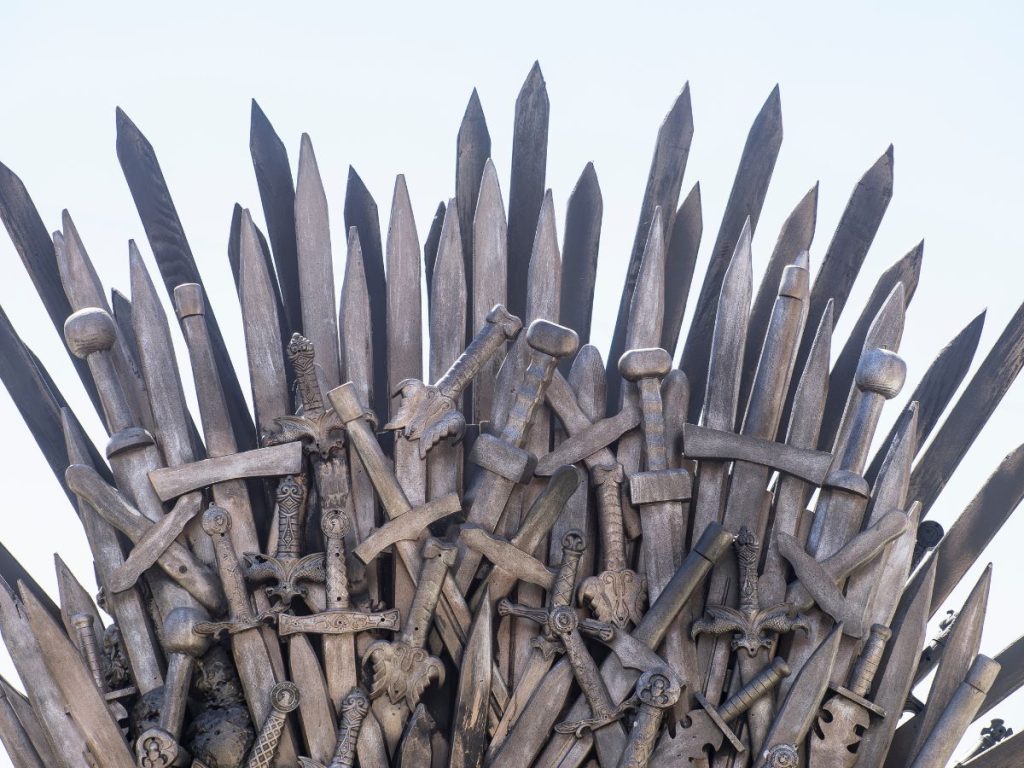
The plot, however, is full of dark fantasy elements. Among the characters, there is no clear boundary between good and evil, no relationship is absolute at some point, and there are numerous unpleasant and violent moments.
It’s important to keep in mind that fusing different styles does not necessitate losing what makes each unique. A high fantasy work can have bleaker undertones without sacrificing its epic scope, unique setting, or in-depth examination of universal issues. Similarly, a dark fantasy story set in a high fantasy world will still delve into the disturbing and the macabre, and it will often possess an overall darker tone.
As a result, it is true that high fantasy can have a grim tone. This synthesis of styles provides a huge setting for storytelling, opening the door to tales that combine the epic scope of high fantasy with the gritty realism and moral ambiguity of dark fantasy.
This mash-up gives readers a chance to plunge into imaginative worlds where they can feel both the light and the dark. It demonstrates that, like the actual world, the fantastic may be both wondrous and dark, offering readers a varied and interesting setting.
Finally,
Exploration into the rich tapestry of high fantasy and the gloomy depths of dark fantasy uncovers a spectrum that is as diverse as it is compelling in the vast field of fantasy literature. Though separate, the two subgenres frequently intersect, resulting in a complex environment where the grandeur of epic adventures meets the sad truths of darker themes.
With its independent, intricate worlds, moral clarity, and grand-scale storytelling, high fantasy provides an escape from reality. It allows us to immerse ourselves in mystical worlds and fight epic battles with wizards, knights, and mythological animals. It reflects our hopes, dreams, and ideas of bravery, friendship, and the force of good.
Dark fantasy comes with a more complex representation of reality. It goes into the depths of the human psyche, fusing fantastical aspects with horror, the macabre, and ethically ambiguous people. It reminds us that even in a fantasy world, corruption, inner demons, and tremendous conflicts can exist, highlighting the grittier sides of life and the war within ourselves.
The fusion of these two genres, as witnessed in works such as George R.R. Martin‘s A Song of Ice and Fire, produces epic storylines shrouded in greyscale. This fusion broadens and deepens the fantasy genre, providing readers with new viewpoints and experiences within the fantastical realms.
Wrapping up
In conclusion, whether you prefer the subtle yet fascinating epic fantasy worlds or the bleak, darker nooks of dark fantasy storylines, both subgenres offer distinct, engaging ways to explore the fantastic. They take us beyond the routine, inviting us to contemplate universal issues and human nature in contexts where regular norms do not apply.
After all, while we travel through these dream landscapes, whether bright or gloomy, we are exploring the full range of human experience through the lens of the extraordinary. From the highest heights of idealism to the darkest depths of the human condition, fantasy literature in all its forms serves as a mirror through which we can better comprehend ourselves and the world.
Whatever your inclination, the voyage through these realms is a captivating adventure – a monument to our imagination’s power and grandeur.
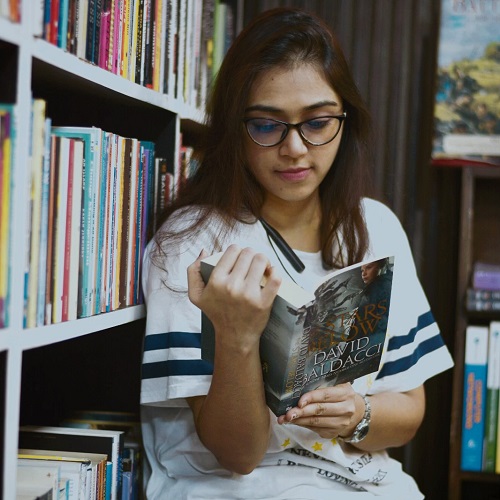
I am Sanchita, and books are my life force. I live and breathe stories. Getting lost in fictional worlds has been my favorite thing to do for as long as I can remember. Over the course of 20 years, I have read over a thousand books and here I have come to talk about them.

